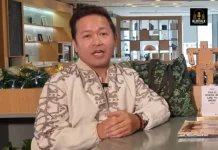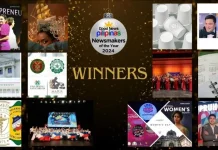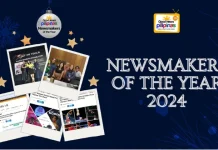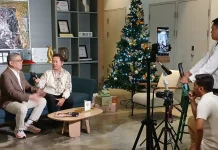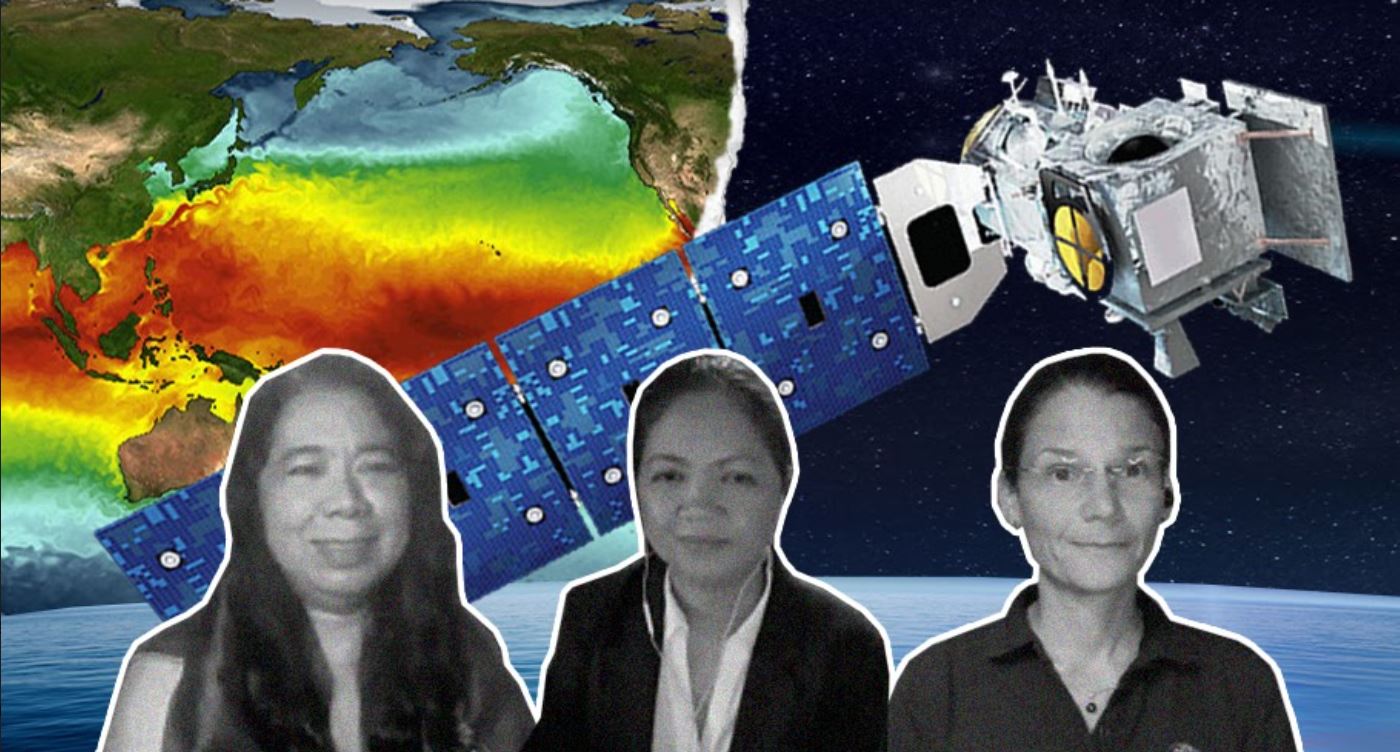
University of the Philippines and Philippine Space Agency (PhilSA) women scientists along with an official from the United States National Aeronautics and Space Administration (NASA) are urging the continued use of satellite data to help communities on earth.
UP scientist Dr. Laura David, PhilSA Deputy Director General Dr. Gay Jane Perez, and Dr. Laura Lorenzoni of the NASA Ocean Biology and Biogeochemistry Program made the appeal during the Philippines’ celebration of World Space Week in a webinar that highlighted ocean protection and management.
The “Women in Space” experts from the marine and space science sectors discussed in the October 5, 2021, webinar how space technology is currently utilized for ocean research, protection, and management efforts with the aim to increase awareness and empower the public.
Engaging local communities
The first discussion centered on the status of Philippine marine ecosystems and the importance of engaging local authorities and communities in conservation and protection programs.
Dr. Laura David, Director of the University of the Philippines Marine Sciences Institute (UP MSI), shared important lessons from their engagement with the fishing communities in Anda and Bolinao, Pangasinan.
She discussed how remote sensing was used as a tool in ocean observation, serving as an “eye in the sky,” and providing the local communities with early warnings in case of anomalies and critical temperature increase in the environment. Specifically, areas that have possible high vulnerability are now more easily identified through the combined data on historical records of environmental coral cover and mangrove cover, and fisher population and density.
“Remote sensing is a powerful tool but, ultimately, the decisions and actions taken are up to the community. So there’s a need to democratize access to the data so that they can make their decisions and no longer wait for us to tell them if there is a problem.” Dr. David said, emphasizing the greater need to empower communities by teaching the locals to collect, analyze, interpret, and make good use of these data.
National efforts
PhilSA Deputy Director General (DDG) for Space Science and Technology, Dr. Gay Jane Perez shared PhilSA’s efforts in mobilizing space data for marine and coastal monitoring.
She cites the Philippines’ Diwata-1 and Diwata-2 microsatellites as the country’s sources of satellite data for monitoring and research. These are complemented with a large collection of satellite data accessed through the ground receiving stations and open data access from other space agencies such as the National Aeronautics and Space Administration (NASA), European Space Agency (ESA), and Japan Aerospace Exploration Agency (JAXA).
“With our access to numerous satellite resources, we can maximize it for monitoring our coastal and marine environment: from ridge to reef to high seas, satellite data can provide actionable information that can aid in the management of the fishery sector and sustainability of our marine ecosystems,” Dr. Perez said.
Dr. Perez further detailed the different use cases of satellite data not only on water quality management and coastal monitoring but also in fishing and aquaculture and maritime domain awareness. Satellite data has particularly been proven useful in monitoring the changes in the country’s coasts, especially in view of the critical rehabilitation projects.
“Whatever happens to our coasts also impacts the ecosystem alongside it. Benthic communities in our coastal communities have little to no mobility at all so any changes in our coastal areas will surely impact the communities underwater,” Dr. Perez explained.
Moving forward, Dr. Perez assured that PhilSA’s ocean conservation initiatives are aligned with the country’s needs through a decadal survey. The decadal survey involves consultation with communities, the national government, the academe and research institutions, private sectors, and Non-Governmental Organizations to ensure that the 10-year plan on satellite data mobilization will be responsive to both the current and future needs of the country.
A global perspective
Accompanying the discussions at the local and national level, Dr. Laura Lorenzoni of the NASA Ocean Biology and Biogeochemistry Program gave a global perspective on space technology applications in marine and coastal conservation and management.
“When you think of NASA, most people really think about Space Exploration and, you know, landing rovers in Mars and Voyager that go worlds beyond our solar system but NASA doesn’t just explore other planets, NASA has a very robust Earth Science Program,” she said.
Among the latest additions to NASA’s satellite fleets is ICESat-2, which measures the thickness and land elevation of ice sheets. This has proven to have useful applications in monitoring shallow areas like coral reefs and coastal areas.
NASA is now gearing up for the formulation of the Earth System Observatory, which comprises four distinct Earth-focused missions by looking at different aspects of the planet, from bedrock to atmosphere. The project aims to provide information to guide efforts related to climate change, disaster mitigation, and improving agricultural processes.
Dr. Lorenzoni also echoed the sentiment of Dr. David in making data more accessible to the people: “NASA is embracing something that we call Open Science…and it’s not just basically opening the data; but opening the code, the know-how, and all of that that comes with the scientific research, because empowering everyone to advance the Earth’s system knowledge really makes discoveries and new applications faster and enables people to come up with brand new things that no one had ever thought of”.

The webinar titled “Seeing the Sea from Space: Space Technology for Ocean Protection and Management” was held as part of the World Space Week celebration held by the Philippine Space Agency in partnership with the U.S. Embassy in the Philippines and Fulbright Philippines.
PhilSA Director General Joel Joseph Marciano Jr. emphasized the importance of complementing the country’s mastery of the space domain with a mastery of its natural environment: “As an archipelagic nation and with our geographical location in the Pacific Ring of Fire and the Typhoon Belt, the need to master the natural environment, the seas, and oceans that surround us is vital—just as compelling is the need to master the domain of space. The capabilities offered by Space Science and Technology, whether for terrestrial or maritime monitoring or connectivity, can help bridge our islands, uplift our condition, and empower our lives.”
The future of space and environmental sciences
A panel discussion moderated by Fulbright Philippines’ Executive Director Julio Amador was also conducted after the presentations. Among the questions asked was the speakers’ advice to young girls who are interested in a career in the space sciences.
Dr. Perez shared an interesting perspective in appreciating a career in the sector: “We know that space is cool, but I guess what makes it more cool is that we are using space for our everyday lives. It improves our daily lives. And I think if you are thinking of a career to pursue in the future, what could be more meaningful and impactful than to do something really cool but know that it helps”.
Dr. David further highlighted the need for more women and girls in the science sector: “Women and girls are very attentive to detail and they, therefore, have the right mindset and patience to do this science—this science and art of remote sensing. So definitely, please, if you’re interested in nature, please pursue a career in science, in marine science—in remote sensing, because we need you.”
For those who are already into space science, Dr. Lorenzoni has these words of encouragement: “Never give up, no matter how wild your dream might be, and take every opportunity that shows up. It might not be immediately obvious where it is taking you but there is a reason why this opportunity opened up. And no learning is ever wasted and life has a way of really bringing you back to maybe where you were supposed to be.”
For the esteemed Women In Space during the event, women assume a paramount role in taking care of the environment, therefore every young girl is encouraged to step up and take advantage of every learning opportunity because the sector is counting on them to shape a sustainable and inclusive future.
The University of the Philippines built Maya 3 and Maya 4 cube satellites that were recently launched to outer space orbit from the International Space Station.
Good News Pilipinas is celebrating its 15th Anniversary in 2021 by giving away prizes! Subscribe to this website and Good News Pilipinas! TV YouTube channel and enter the raffle by telling us what you like about our stories in an email to editor@goodnewspilipinas.com


